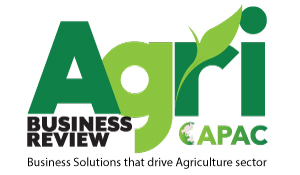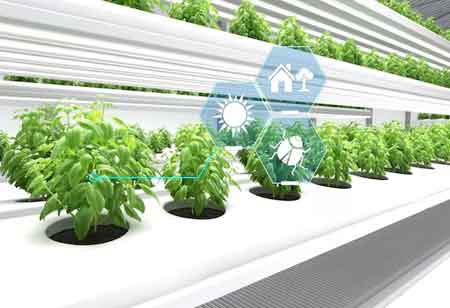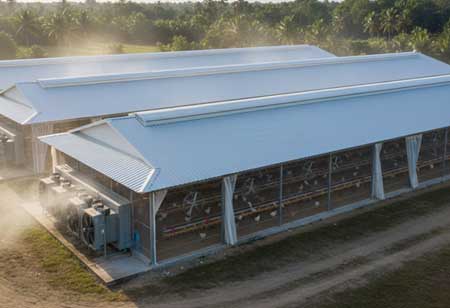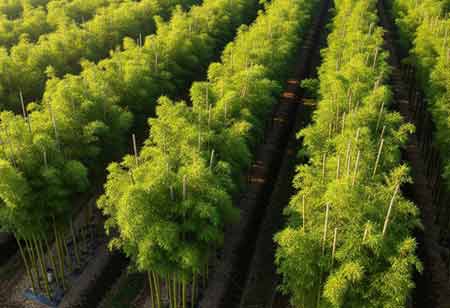Thank you for Subscribing to Agri Business Review Weekly Brief
Precision Agriculture: Leveraging New Technologies in Agriculture to Increase Yields
Precision farming uses new tools like satellite images and field maps to improve crop quality and make more money.

By
Agri Business Review | Tuesday, August 30, 2022
Stay ahead of the industry with exclusive feature stories on the top companies, expert insights and the latest news delivered straight to your inbox. Subscribe today.
The management of precision agriculture systems is dynamically developing. They enable farmers to address a vast array of issues. In addition, precision agriculture comprises an enormous variety of instruments that growers must master to maximize their yield.
FREMONT, CA: Precision farming uses new tools like satellite images and field maps to improve crop quality and make more money. Additionally, it maximizes the utilization of conventional resources. Consequently, this agricultural management system contributes to the development of sustainable agriculture, allowing for the resolution of growing economic and ecological issues.
Such a system is possible using GPS, drones, and satellite images. Based on these data, farmers receive information on all essential topics, including crop status, weather forecasts, environmental changes, etc. Also distinguishing precision agriculture from conventional agriculture is the capacity to manage fields not as a single block but by splitting them into several regions. Such zoning permits the diversification of management decisions for particular field sections, such as altering the amount of fertilizer, maximizing method mobility, and conserving fuel.
Precision agriculture technology allows farmers to manage all processes remotely. Even small farms can handle enormous fields or a collection of small regions.
A crucial component of precision agriculture technology is the last component since it initially appears to be expensive. It significantly improves crop efficiency and reduces costs while increasing production. However, long-term savings are substantially greater than with conventional agriculture practices. Therefore, producers can adequately calculate the required fertilizer amount and identify the most effective fertilizer types for a given region. In addition, the significance of precision farming technologies lies in the fact that they improve the planning of agricultural operations over an extended period by altering the real-time strategy during unforeseen circumstances.
It is essential to optimize the use of soil so that its quality can be preserved, thereby ensuring a stable food supply. Precision farming is, therefore, crucial to solving the global hunger problem.
Precision agriculture requires specialized hardware and software for data collection and analysis. The deployment of precision agriculture technology requires specialists since hardware and software are required. However, with further effort, farmers can sustain themselves. Ground, aerial, and satellite components comprise precision agricultural technology. The former is ideal for production planning, cartography, surveillance, and machine control. The latter two are suitable for solving larger global issues, such as real-time yield state analyses everywhere. It is recommended to utilize a combination of technologies to collect objective data.
Combining different technologies is the best way to obtain accurate data.
Geographic Information Systems (GIS) use object and location information to generate maps, including digital ones. Remote sensing is required to divide the farm into distinct zones. All zones have distinct characteristics that need GIS and GPS research. These zones are traditionally separated based on soil type, nutrient availability, soil moisture content, pH level, and pest infestation.
In precision agriculture, GIS lets farmers view records such as soil survey maps and traditionally cultivated plant characteristics. Satellite imagery and aerial photography provide further data. By comparing and altering data layers, GIS also allows for analyzing alternative agricultural management strategies.
UAVs And Dusters In Agricultural Precision
Unmanned aerial vehicles (UAVs) are the foundation of crop management technologies based on the airborne perspective. Thus, farmers may check the yield condition without physically inspecting each area. Initially, crop dusters appear to be the simplest solution because farmers already use them for watering and seeding. They may connect a hyperspectral camera to any agricultural aircraft to collect the necessary data. However, this may result in an increased workload for crop dusters, who will be required to perform duties in addition to their primary crop management duties. It will accelerate gadget degradation and increase environmental pollution. Additionally, this procedure involves the use of a qualified pilot.
Utilizing UAVs or drones for precision agriculture is a more modern approach. They are remote-controlled and fuel-efficient. In addition, precision agriculture drones can conduct comprehensive multispectral, thermal, and hyperspectral soil assessments.





